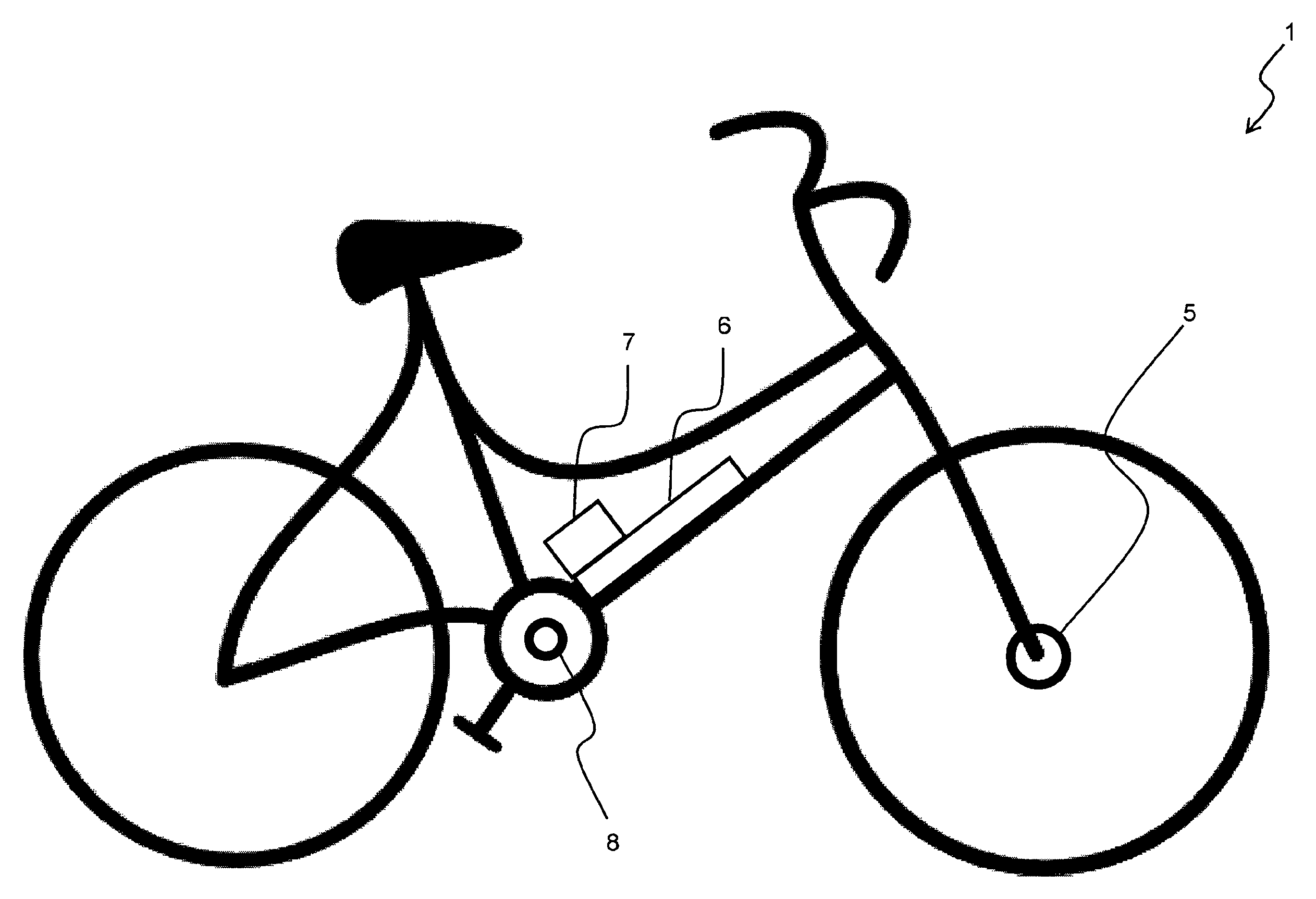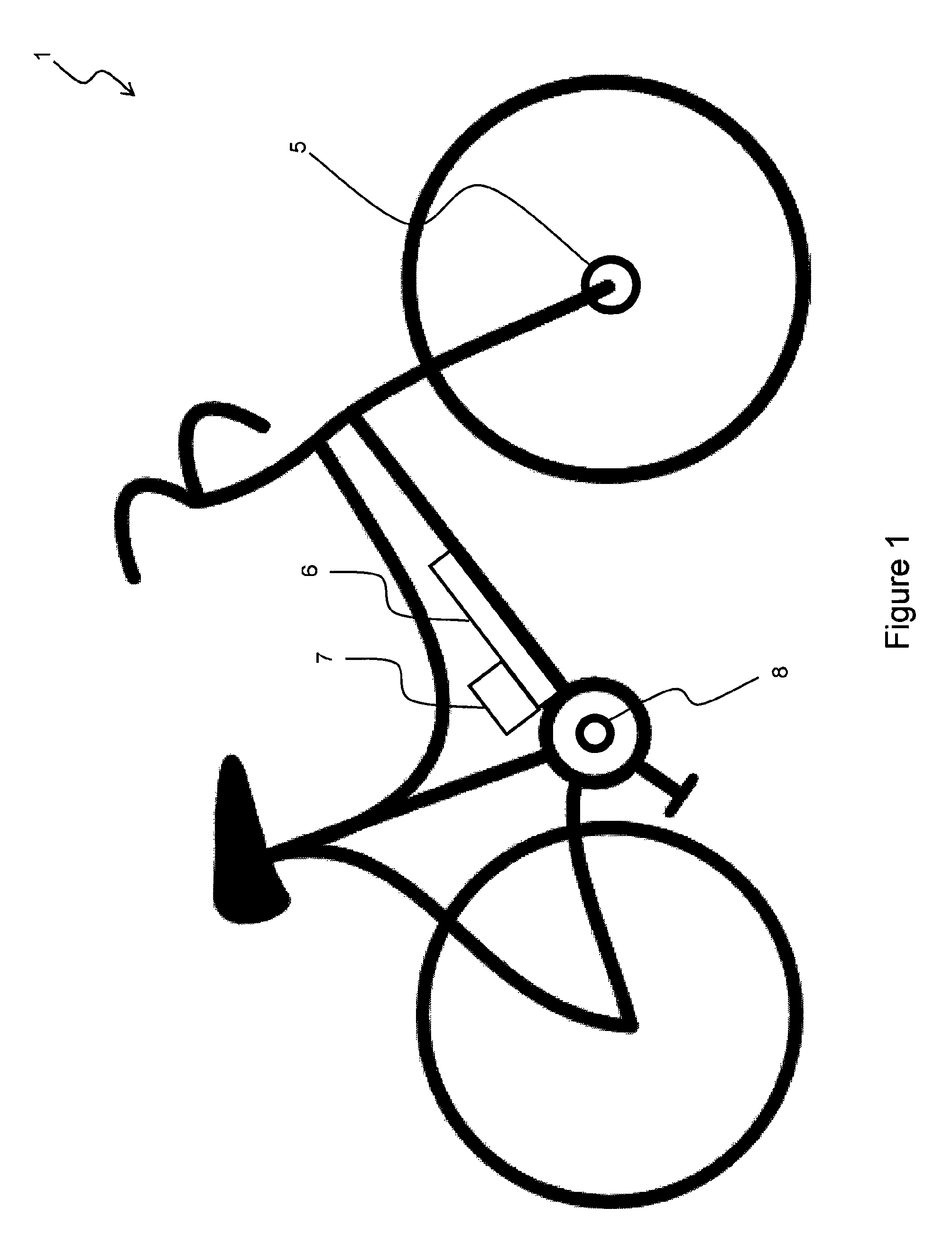Electrically pedal-assisted bicycle
a pedal-assist bicycle and electric technology, applied in the direction of bicycles, battery/cell propulsion, transportation and packaging, etc., can solve the problem of limited range and achieve the effect of increasing the range of bicycles and less effor
- Summary
- Abstract
- Description
- Claims
- Application Information
AI Technical Summary
Benefits of technology
Problems solved by technology
Method used
Image
Examples
first embodiment
[0052]Referring to FIG. 4a, it is shown schematically a flow chart of the method 100 for driving the electric device of the electrically assisted bicycle 1 according to the invention.
[0053]The method 100 comprises the steps 101, 103, 105.
[0054]In step 101 it is performed the comparison between the human power Pum with respect to the friction power Pattr: in case the human power is greater than or equal to the friction power, it is performed the step 103, otherwise it is performed the step 105.
[0055]The term human power Pum means the power generated by the cyclist on the pedal arms of the bicycle 1 when the cyclist is pedaling; in other words, it is the effort performed by the cyclist when he is pressing on the pedal arms with his feet. For example, the human power Pum is calculated with the following formula (1):
Pum=Tped*ωped (1)
[0056]Wherein Tped is the torque generated by the cyclist on the pedal arms of the bicycle 1 and ωped is the angular velocity of the pedal arms of the bicy...
second embodiment
[0073]Referring to FIG. 4b, it is schematically shown a flow chart of a method 150 for driving the electric device of the electrically assisted bicycle 1 according to the invention. It has to be observed that in FIG. 4b steps and symbols equal to the ones of FIG. 4a are indicated with the same reference numbers.
[0074]The method 150 comprises the steps 101, 102, 153, 154, 105.
[0075]In the step 101 it is performed the comparison between the human power Pum and the friction power Pattr: in case wherein the human power is greater than or equal to the friction power, it is performed the step 102, otherwise it is performed the step 105.
[0076]In the step 102 it is evaluated the slope θstr of the road (in other words the slope of the ground) wherein the bicycle 1 is running. When the slope of the road θstr is greater than zero (that is the cyclist is running along an uphill road) or equal to zero (that is the cyclist is running along an flat road), it is performed step 153. In the case wher...
PUM
 Login to View More
Login to View More Abstract
Description
Claims
Application Information
 Login to View More
Login to View More - R&D
- Intellectual Property
- Life Sciences
- Materials
- Tech Scout
- Unparalleled Data Quality
- Higher Quality Content
- 60% Fewer Hallucinations
Browse by: Latest US Patents, China's latest patents, Technical Efficacy Thesaurus, Application Domain, Technology Topic, Popular Technical Reports.
© 2025 PatSnap. All rights reserved.Legal|Privacy policy|Modern Slavery Act Transparency Statement|Sitemap|About US| Contact US: help@patsnap.com



